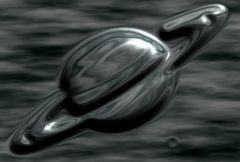S_EmbossDistort
Embosses and warps the Source clip using the Bumps input as a relief map and also distorts the result using the Bumps as a 'lens' image. Increase the Bumps Smooth parameter for bolder bumps, and adjust the Light Dir to illuminate the bumps from different angles.In the Sapphire Stylize effects submenu.
Inputs:
-
Source: The current layer. The clip to be processed.
- Bumps: Defaults to None. The bump map and lens source for the emboss.
- Matte: Defaults to None. If provided, the emboss is applied only at the areas specified by this input. This input can be affected using the Blur Matte, Invert Matte, or Matte Use parameters.
- Bumps: Defaults to None. The bump map and lens source for the emboss.

|